The decoration of the window for many centuries remains the most important decorative and functional detail in the design of any interior. That is why, picking up fabrics for curtains, it is necessary to take into account many factors. To create a relevant and attractive image, it is not enough to choose the material of the appropriate color. It is necessary to take into account the presence of pattern, surface quality and tissue density, the ability to create folds, product practicality. Recently, variables of multilayer curtains are increasingly used, therefore it is worth understanding which fibers can be combined with each other.
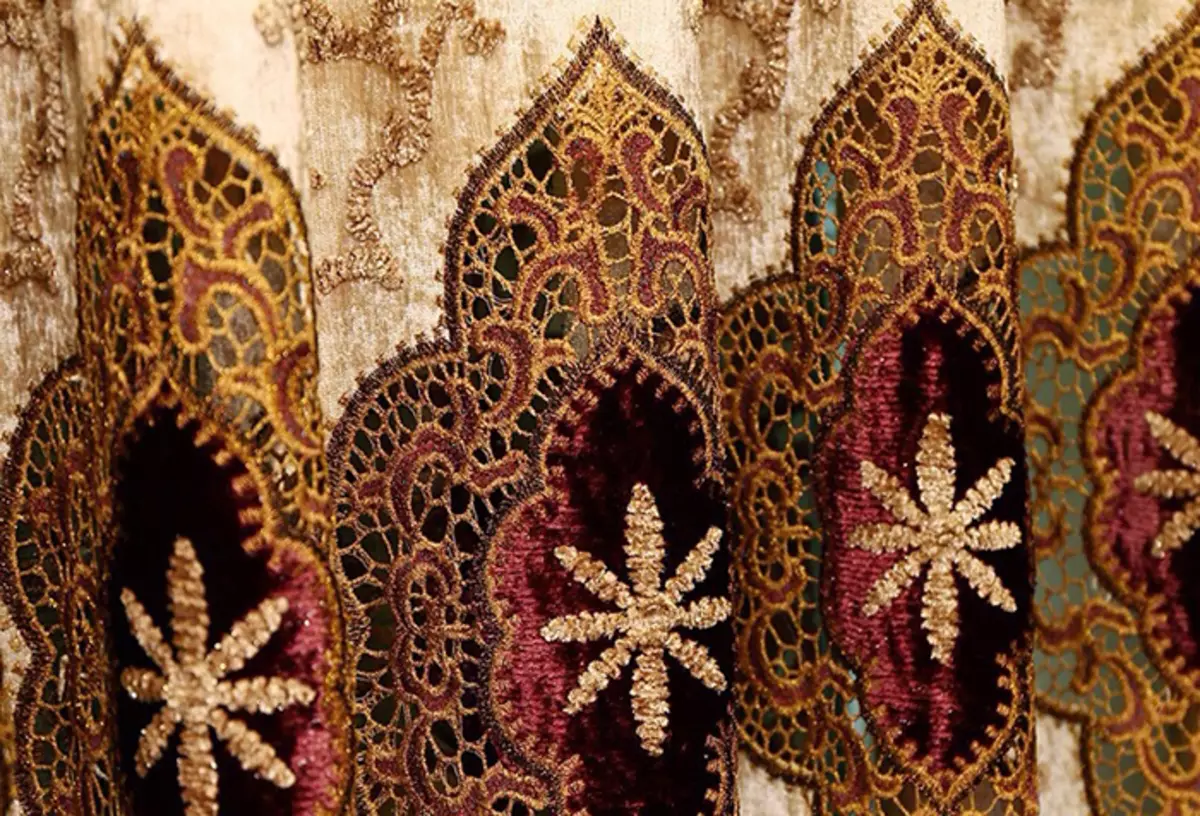
Important moments in the process of selection of fabric
The choice of fabrics on the curtains often puts most of the owners to a dead end, only units understand exactly what they need. Selecting the appropriate material, some factors must be taken into account.
- Durability. Curtains that will be subject to permanent operation should not quickly wear out. The curtains used to shaded the room on the sunny side should be selected from the material resistant to ultraviolet. For household premises, there are special types of materials that do not lose attractiveness with frequent washers.
- Practicality. By purchasing material, you need to make sure that it will be ensured by the type of cleaning, which is considered optimal in this case.
- Combustion. A similar factor is relevant not only for public institutions, but also for kitchen premises.
- Supplement. If the image is based on drapes, the cloth for the curtains should be seamless to the corresponding density.
- Absorbing ability. In the kitchen, you should not use the material from fibers absorbing odors and moisture. The window opening with the door to the balcony should not be draped by a cloth intensively absorbing dust.
By purchasing fabrics for curtains, do not forget about the stylistic features of the interior.
- The curtain canvas should be harmonized in color and texture with the interior, so the curtains from the material already used in the decor are the easiest and win-win option.
- Despite the fact that in the room with polished and brilliant interior objects it is recommended to use iridescent types of matter, it is not necessary to abuse the rule. Sometimes the same surfaces merge into one spot, and therefore the whole structure is lost.
Council
If you want from the first attempt to get a good result, it is recommended to develop an alleged decor with special computer programs. As a last resort, it is necessary to achieve the perfect combination of all materials used and evaluate their appearance in different types of lighting.
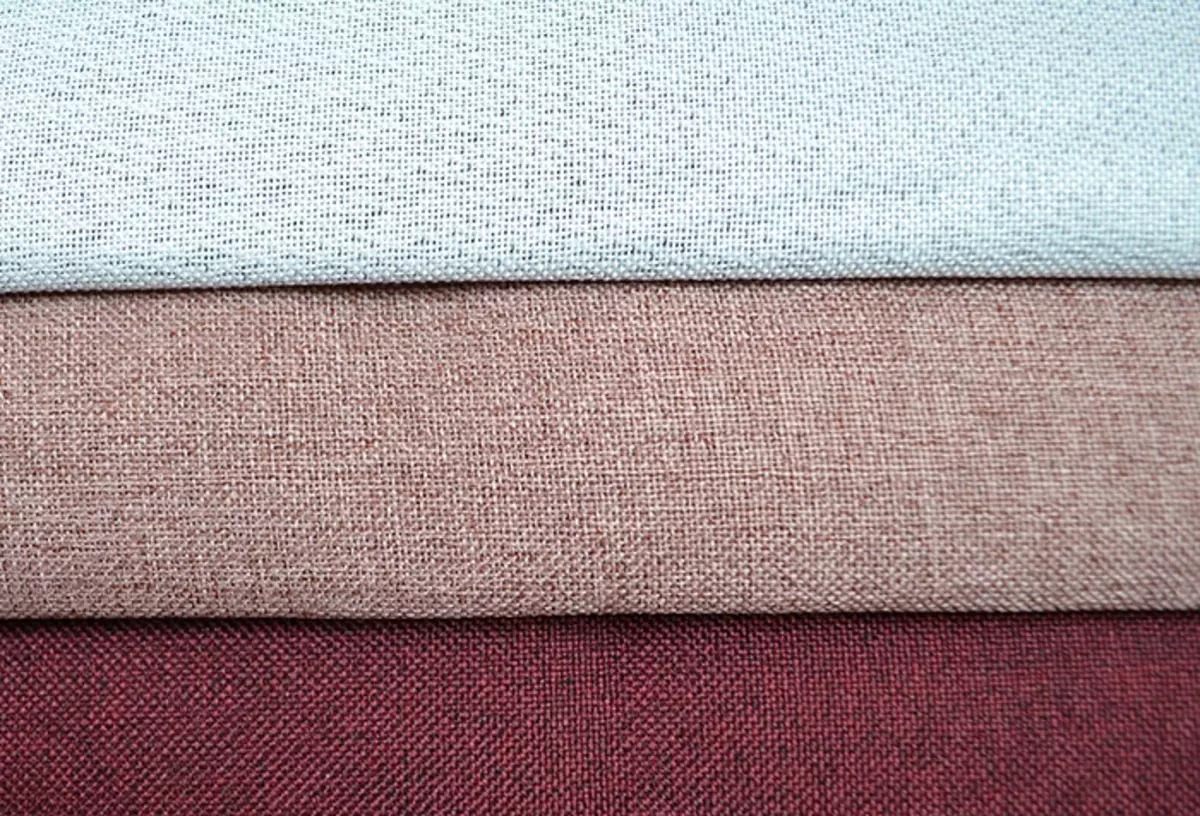
Natural and artificial fabrics
By type of raw material used to create fibers, the fabric on the curtains is natural, artificial, synthetic and mixed.
Article on the topic: Design of the hallway in the apartment
The composition of natural fabric includes animals or vegetable fibers. The main plus of the species is environmentally friendly, and the drawback is a high cost.
This group includes 4 main types of textiles.
- Cotton. Possesses positive practical characteristics. It is durable, durable, does not attract dust, since it does not accumulate electricity. This curtain material is not afraid of frequent washing subject to certain rules. Cotton is well stroked with a wet steam. The cons of the product includes a tendency to yellowing under the action of direct sunlight and a slight running on the washing.
- Linen. A slightly rough texture fabric of increased strength and unique structure. After washing it can sit down a bit. It is strokes a very hot iron, preliminarized by steam. Flax canvas are not electrified, do not form a pile, due to density and severity forms attractive folds.
- Wool. Cuts of woolen matters are not necessarily dense and fluffy, there is a special tissue on curtains, characterized by smoothness and subtlety. Wool is almost not contaminated, but absorbs unpleasant odors. Such curtains need regular ventilation. Washing must be as delicate as possible, it is better to replace it with dry or chemical cleaning. The main disadvantage of the option - in the folder folds can make mole.
- Silk. According to universal recognition, silk fabrics for curtains today are considered the most luxurious. They fall out soft folds, dreamed beautifully, shimmer into the light, attract attention to unique colors. With incredible subtleties, silk is distinguished as much as possible among natural tissue strength. Matter does not accumulate electricity, does not break, there is no risk of moth. With all its positive qualities, silk is very capricious: there is a special mode of washing, drying and ironing, cloth needs to be protected from the sun and drops of water.
Artificial fabrics are also based on natural fibers, but they are treated in a chemical path. This includes viscose, which can acquire the view of the canvas of any type. The fabric is unpretentious and attractive, but when wetting loses strength. For this reason, it can not be squeezed and often washed.
Council
In order not to fall on the fishing school of sellers outstanding viscose for natural cotton, wool, silk or flax, a small piece of matter needs to be alleged. When burning, a characteristic smell of burner paper will appear.
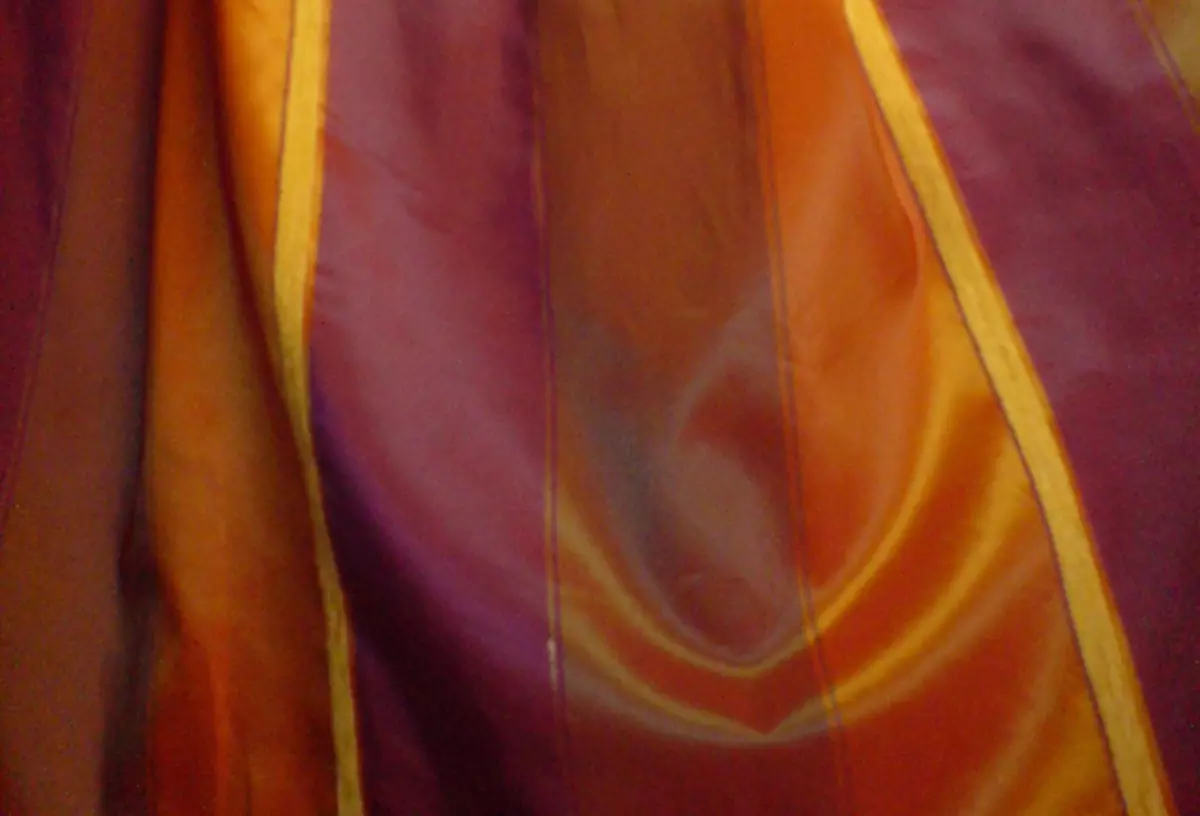
Synthetic and mixed fabrics
All types of synthetic tissues for curtains are created from polymer fibers by complex synthesis process. Products of processing industries are used as the source components.
Article on the topic: Installing the door without a threshold: Tools, Materials, Mounting Rules
Among the positive aspects of similar products, it is possible to allocate strength, durability, resistance to wear, low cost, unpretentiousness, pleasant texture and lack of inclination to burn apart. There are also cons - synthetics accumulates electricity, needs a frequent wash, does not go on ecology in any comparison with natural tissues.
- Polyester. It does not occur, it does not sit down, keeps the form after temperature exposure, which allows you to form resistant folds.
- Acrylic. The fabric from sight and texture resembles wool. It has all the pretters of synthetics, but on the surface of such curtains over time, rides are formed, which will noticeably spoil the appearance of the product.
- Nylon. Easy and smooth fabric with an elastic surface, not dumping and does not mind. The form of the product is not injured even after a variety of washes. The only drawback is quickly fascinated by direct sunlight.
Mixed fabrics are relatively new types of matter that imply a combination of several types of fibers. There are various options for combining natural, artificial and synthetic raw materials. Such developments are created to reduce the cost of tissues on curtains, enhance the practicality of the canvas while maintaining an attractive appearance.
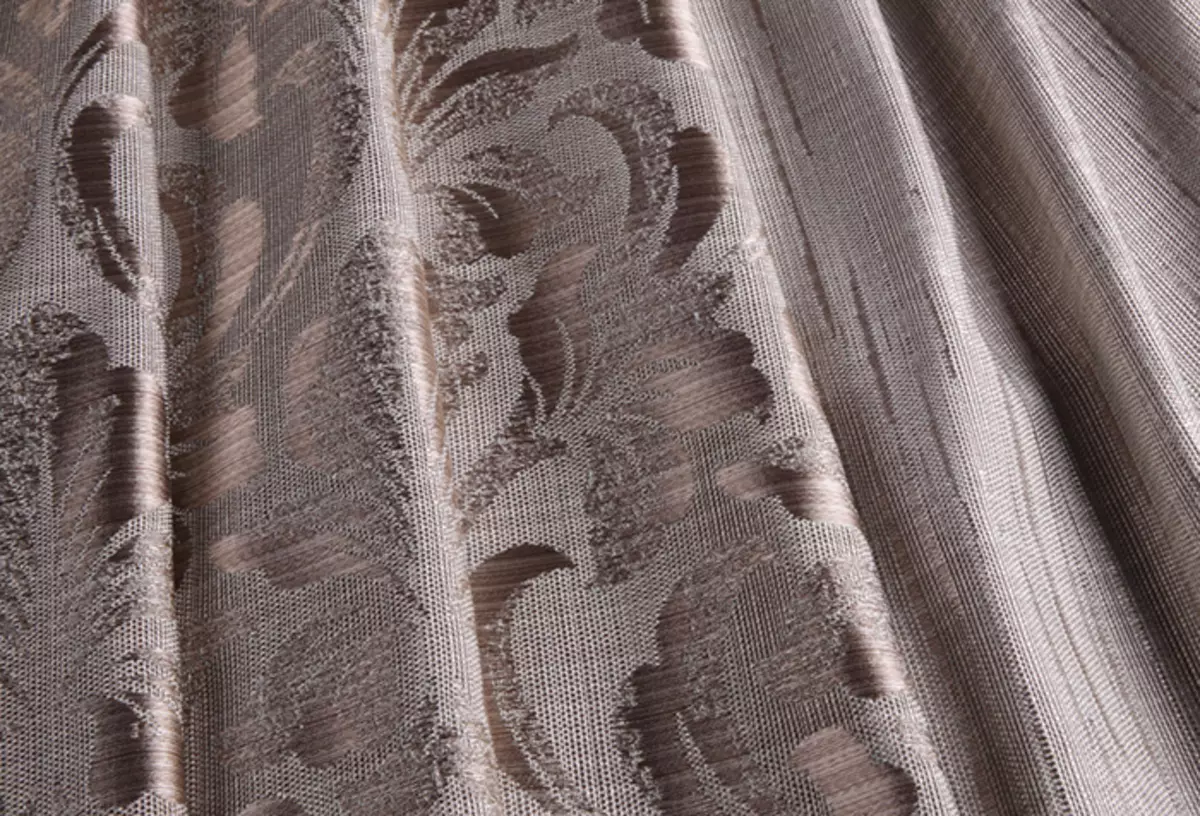
Tissue classification
To date, there are no less than 300 types of matter suitable for sewing, but the following varieties will be suitable for creating a curtain.
- Velvet. Heavy porcelain material that generates a solemn image even with normal drapery. Very well preserves heat indoors.
- Brocade. Amazing in the appearance of matter with the addition of threads with a metal glitter. Due to soft overflows, it looks self-sufficient and does not even need decorative accessories.
- Jacquard. Durable and durable material formed by a large number of tightly intertwined threads. Specific relief pattern is equally attractive with facial and from the wrong side of the canvas.
- Atlas. Soft, "pouring" fabric with a patterned or smooth surface with unobtrusive glitter.
- Satin. Very subtle material similar to silk. It holds well and attracts soft glitter.
- Shenill. Farm fabric, similar to velvet, but not so hard. It can be solid or possess a drawing on the type of jacquard.
- Organza. Flying and aircraft with outstanding strength indicators. It can be shiny and matte, most often used for sewing simple or multilayer curtains.
- Tulle. Light translucent fabric in the form of a mesh or patterned canvase.
- Veil. Softer than organza, but this is not so transparent, this matter forms folds, changing color depending on the number of layers.
- Blackout. Modern three-layer material, which is designed to provide high-quality insulation of the room from light, sound, temperature effects.
- Kieme. Separate material used for tailoring curtains. The fabric misses the light well, only a slightly muted, does not prevent the penetration of fresh air, makes eastern notch into the atmosphere.
- Taffeta. Thanks to the specific fragility of folds, matteria is used to create complex, textured and unusual silhouettes.
- Flock. Unique creation from the textile base and a soft pile sprayed on it in the form of a drawing of any complexity. Over the finished product, gold or silver powder, giving fabrics special elegance, is often applied.
Article on the topic: Tykkurila paint - We select paint color on the facade
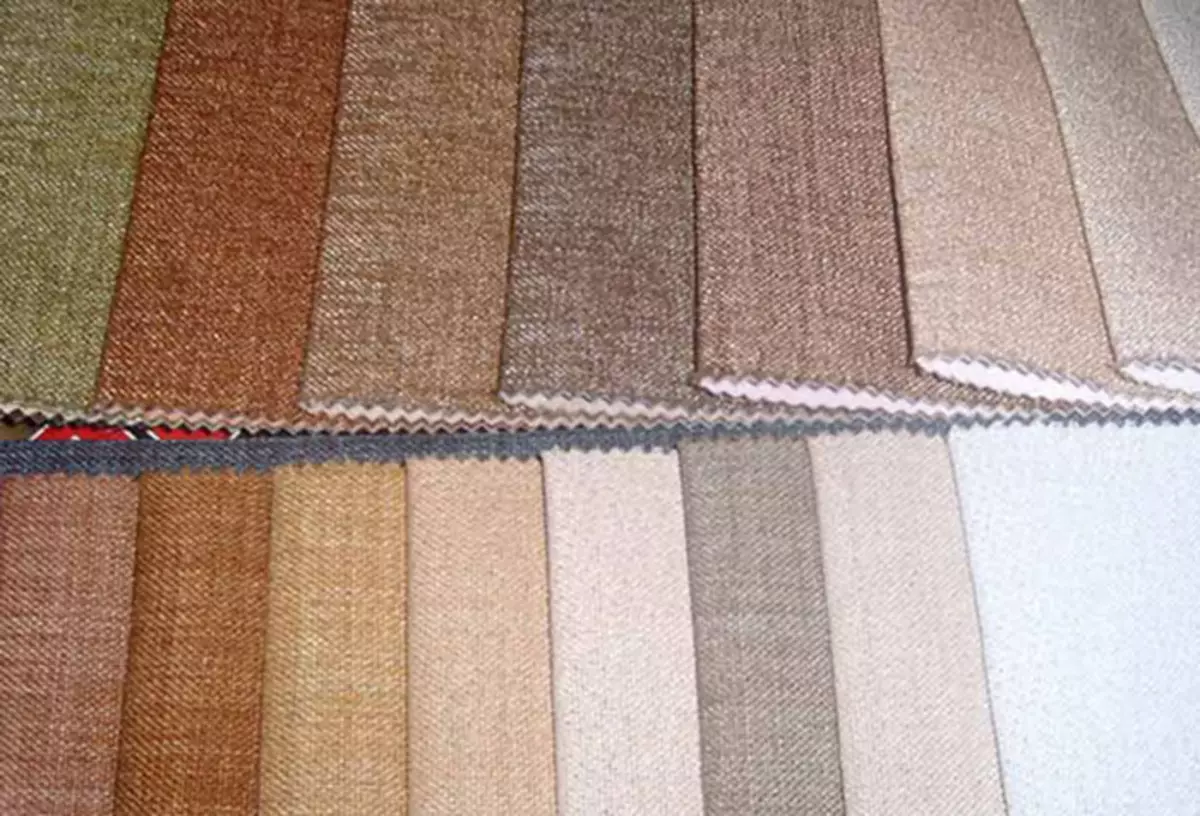
Output
There are still many fabrics that are suitable for sewing curtains, and their number is constantly increasing due to the rapid development of modern technologies. For example, on textiles, the existence of which is calculated by centuries, any drawings or patterns are applied with a laser, the threads glowing in the dark can be woven.
Do not stand still and the practical side of the products. With the help of special impregnations, even the most fragile and capricious matter is now attached to additional properties.
Basic knowledge of the tissue fabrics will help to make the right choice, ensure full-fledged care curtains, extend their life.
